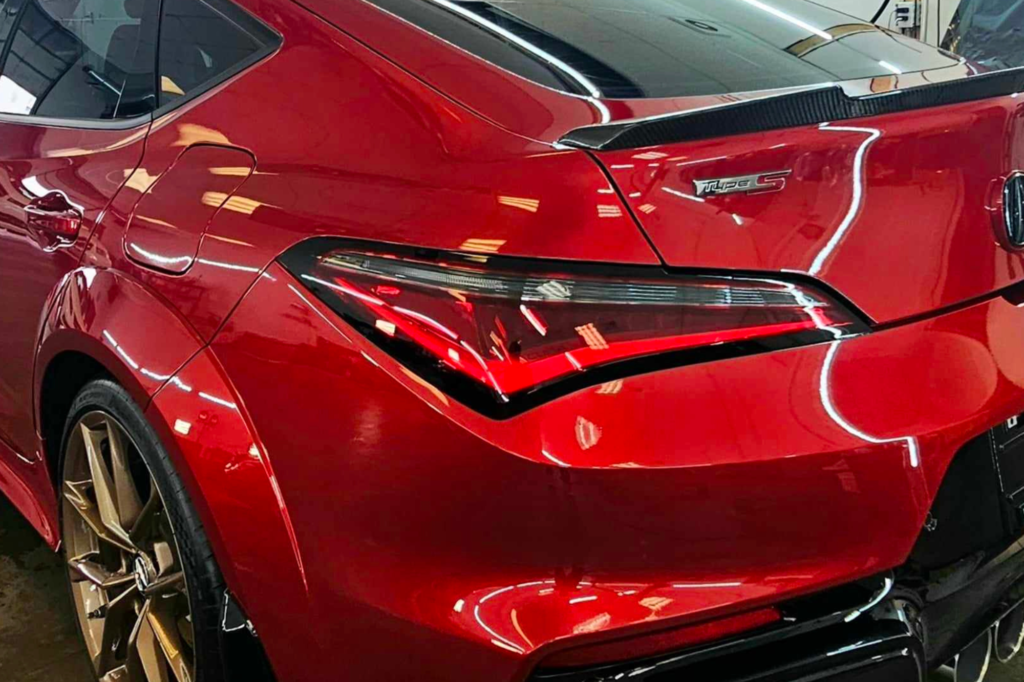UV rays penetrate your car’s clear coat, causing oxidation, fading, and dry paint, which leads to cracking, chipping, and peeling. Dirt acts like sandpaper, creating micro-scratches and eroding the clear coat, exposing the underlying paint. Acidic contaminants, such as bird droppings and road salts, can stain and etch the surface. Protective waxes, sealants, and ceramic coatings offer layers that reflect UV radiation and repel dirt, minimizing damage. Regular washing and maintenance prevent further deterioration. Parking in shaded areas or using covers helps reduce UV exposure. There’s more to learn about safeguarding your car’s finish effectively.
Key Takeaways
- UV rays penetrate the clear coat, causing oxidation that leads to fading and dullness of the car’s paint.
- Dirt acts like sandpaper, creating micro-scratches and accelerating clear coat erosion, exposing underlying paint.
- Acidic contaminants, such as bird droppings, chemically interact with and stain the paint surface.
- Prolonged UV exposure degrades paint pigments, leading to color fading, especially in dark-colored vehicles.
- Regular maintenance and protective measures like waxes and ceramic coatings minimize UV and dirt damage.
Effects of UV Rays on Paint
While you might love the warmth of the sun, it’s important to know that UV rays are silently working against your car’s paint. These rays penetrate the clear coat, leading to oxidation—a process that causes the paint to fade and lose its shine. Over time, UV damage to car paint becomes evident as colors appear washed out and dull.
The paint fundamentally dries out, making it susceptible to cracking, chipping, and peeling.
To protect car paint from UV rays, consider using protective products like waxes or sealants. These create a barrier that reflects UV radiation, preserving the paint’s integrity. A regular application of wax not only enhances the paint’s gloss but also extends its lifespan.
For more robust protection, a ceramic coating offers a hydrophobic layer that shields against UV exposure, markedly reducing the risks of fading and oxidation.
In hot climates, where sunlight is intense, parking in shaded areas or using a car cover can further mitigate UV effects.
Consistent protection and maintenance are key to ensuring your vehicle’s paint remains vibrant and intact, counteracting the relentless assault of UV rays.
The Role of Dirt in Damage
As you focus on UV protection, don’t overlook the significant impact dirt has on your car’s paint. Dirt on car paint isn’t just an aesthetic issue; it can lead to serious damage. Tiny particles act like sandpaper, creating micro-scratches and swirls on your vehicle’s surface. Over time, this abrasion can erode the clear coat, leaving the underlying paint vulnerable to further degradation.
Additionally, dirt often carries acidic contaminants, such as bird droppings and road salts, which can chemically react with the paint, causing staining and discoloration.
To combat this, consider applying a ceramic coating Tacoma. This advanced product forms a protective barrier on your car’s paint, repelling dirt and pollutants while enhancing the paint’s gloss. Ceramic coatings are hydrophobic, preventing water spots and making dirt removal easier.
Regular maintenance, including washing and applying such coatings, is essential to preserve your vehicle’s appearance and value. Neglecting dirt buildup can accelerate paint deterioration, leading to costly repairs.
Oxidation and Fading Process
When UV rays strike your car’s paint, they initiate a chemical reaction that leads to oxidation. Oxidation occurs when the paint’s molecules react with oxygen in the air, causing the paint to lose electrons. This process weakens the paint’s molecular structure, making it more susceptible to fading.
You might notice your car’s color gradually dulling, losing its original luster. As the paint oxidizes, it becomes less reflective, which diminishes its ability to resist further UV damage.
Fading is another consequence of prolonged UV exposure. The sun’s rays break down the pigments in the paint, which are responsible for the car’s vibrant color. Over time, these pigments degrade, leaving your car’s surface looking washed out and uneven.
The fading process is often more pronounced in darker-colored vehicles, where the contrast between oxidized and unaffected areas is more noticeable.
To mitigate these effects, regular maintenance is essential. By understanding the oxidation and fading process, you can take proactive steps to preserve your car’s appearance.
Implementing a consistent care routine, like washing and waxing, helps protect the paint from ongoing UV exposure.
Clear Coat Erosion Explained
The clear coat on your car serves as the first line of defense against environmental hazards, acting as a protective barrier over the colored paint layer. Over time, this clear coat suffers from erosion, primarily due to prolonged exposure to UV rays and abrasive contaminants.
UV radiation breaks down the chemical bonds in the clear coat, leading to oxidation. This process gradually diminishes its gloss and durability, making the surface appear dull and lifeless.
Dirt and debris also play a significant role in clear coat erosion. When these particles settle on your car, they create micro-abrasions through friction, especially when you wash the car without proper techniques. These tiny scratches accumulate, causing the clear coat to thin out, which accelerates the deterioration process.
Moreover, contaminants like bird droppings, tree sap, and industrial pollutants chemically interact with the clear coat. If left unchecked, they penetrate deeper, causing etching that weakens the protective layer.
The result is an inevitable, premature erosion of the clear coat, which exposes the underlying paint to further damage. To maintain your car’s aesthetic appeal and protect its paint, understanding clear coat erosion is vital.
Protective Measures to Consider
While it’s tempting to overlook car paint protection, implementing effective measures can considerably extend the life and appearance of your vehicle’s exterior.
Start by applying a high-quality wax or sealant. These products create a barrier against UV rays, reducing oxidation and fading. Opt for products with UV inhibitors for enhanced protection.
Always consider best ceramic coating, which offers superior durability and hydrophobic properties, repelling dirt and minimizing water spots.
Invest in paint protection film (PPF) for high-impact areas like the hood and bumper. PPF acts as a shield, absorbing scratches and preventing dirt accumulation. Make sure the film is professionally installed for ideal coverage.
Parking strategically can also help. Whenever possible, park in shaded areas or use a car cover to shield your vehicle from direct sunlight and airborne contaminants. If you’re in a sunny climate, a UV-resistant car cover is essential.
Finally, choose a reputable brand for all your protective products. Consistent application and maintenance of these products maximize their effectiveness.
Regular Maintenance Tips
To maintain your car’s paint in pristine condition, adopt a meticulous routine with regular washing and inspection.
Begin by washing your car every two weeks using a high-quality car shampoo. This prevents dirt buildup that can cause scratches. Use a microfiber wash mitt to gently clean the surface, avoiding circular motions that may create swirls. Rinse thoroughly with clean water to remove all soap residues.
Inspect your car’s paint frequently for chips or scratches. If you notice any, address them immediately with touch-up paint to prevent rust.
Apply a clay bar every few months to remove embedded contaminants that regular washing might miss.
Waxing is essential. Every three months, apply a high-grade carnauba wax to form a protective shield against UV rays and dirt. This not only enhances shine but also adds a layer of defense.
For those in harsh climates, consider applying a ceramic coating for superior protection.
Lastly, park your vehicle in shaded areas or use a car cover to minimize UV exposure.
Regular maintenance guarantees your car’s paint remains vibrant and reduces the risk of long-term damage.
In Summary
By understanding the effects of UV rays and dirt on your car’s paint, you can take proactive steps to preserve its appearance. Regularly wash and wax your car to remove dirt and protect against UV damage. Consider using high-quality paint sealants or ceramic coatings from Show Room Auto Tinting to provide an extra layer of defense. Don’t forget to park in shaded areas or use a car cover when possible. With attention to these details, you’ll keep your car looking vibrant and glossy for years.


